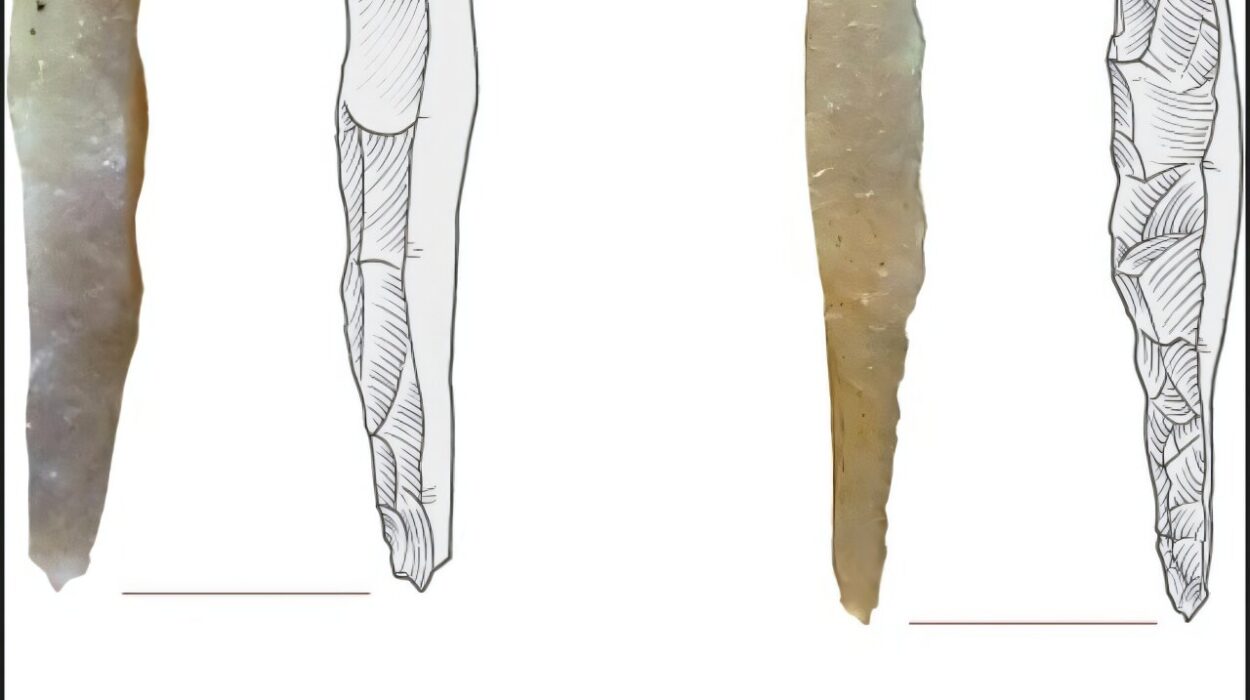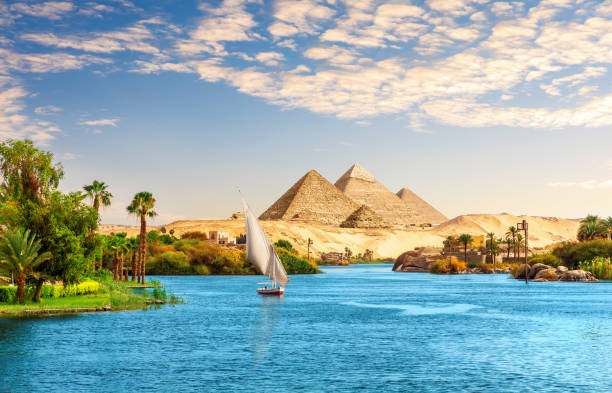When a researcher peers into an ancient artifact, they are not simply examining stone or clay; they are reaching across thousands of years, touching the heartbeat of a vanished world. That is exactly what happened when scientists at the Yale Peabody Museum’s Babylonian Collection examined a remarkably well-preserved alabaster vase—an object carved during the reign of a Persian king, passed through empires, and finally brought into modern hands. Their discovery was unexpected, astonishing, and deeply human: the unmistakable chemical fingerprints of opium.
This finding, made by the Yale Ancient Pharmacology Program (YAPP), does more than reveal what the vessel once contained. It opens a door into the private habits, medical knowledge, rituals, and daily life of ancient Egyptians across centuries. It challenges long-held assumptions about what substances shaped ancient societies and invites us to reconsider objects we thought we understood—especially those discovered in the legendary tomb of Tutankhamun.
A Vase That Spoke in Four Languages
The alabaster vase at the center of the new study is not just rare; it is almost impossibly unique. Inscribed in four ancient languages—Akkadian, Elamite, Persian, and Egyptian—it dedicates itself to Xerxes I, the powerful ruler of the Achaemenid Empire. This alone would make the artifact extraordinary. Yet the researchers were drawn to something else: a dark, aromatic residue on its inner surface.
YAPP’s scientific team noticed that the vase, made from alabaster quarried in Egypt, shared physical features with other Egyptian vessels known to date from roughly the same era. Many similar vessels appear in elite tombs, including the famously lavish burial of Tutankhamun. A second inscription in Demotic script—even older Egyptian writing—indicated its volume: about 1,200 milliliters, a surprisingly large capacity for an ancient carved vessel.
Intact inscribed alabaster jars of this kind number fewer than ten worldwide. To physically hold one is to hold a rare survivor of historical upheaval—the fall and rise of kingdoms, the spread of trade routes, and the intimate activities of daily life. And as it turned out, this object still held onto its own ancient secret.
Unearthing Ancient Residues With Modern Science
YAPP is known for its ability to extract organic clues from objects thousands of years old—clues that usually degrade, decompose, or mingle with contaminants over time. Their methods combine chemistry, archaeology, and digital technology to identify the foods, medicines, and substances ancient people used and valued.
Inside Yale’s alabaster vase, they found something definitive: chemical markers unique to opium. Noscapine, hydrocotarnine, morphine, thebaine, and papaverine—compounds that appear together only in the opium poppy.
These are not ambiguous hints or faint suggestions. They are direct evidence that the vessel once held a preparation derived from the poppy plant. This is the clearest proof yet of widespread opium use in ancient Egypt—not just accidentally or occasionally, but woven into the fabric of cultural life.
The discovery echoes earlier finds in an ordinary merchant tomb in Sedment, Egypt, where alabaster and Cypriot juglets from the New Kingdom contained similar opiate residues. Now, evidence stretches across classes, regions, and a millennium, suggesting that opium was not a rarity or luxury. It was part of daily existence for many Egyptians.
Opium Across Empires and Across Social Worlds
Opium’s presence in both elite and common burial sites reveals its depth of cultural integration. A substance so widespread cannot be explained by sporadic medical usage alone. Ancient texts hint at this broader significance. Poppy plants appear in Egyptian medical papyri, Greek and Roman texts, and Mesopotamian writings. In Crete, the “poppy goddess” held ritual prominence, showing how the plant crossed cultures and belief systems.
By linking opiate residues in a Persian-inscribed vessel from Egypt to similar finds from entirely different eras and social classes, we gain a picture not of isolated use but of a shared tradition. Opium may have been taken for pain, for ritual, for sedation, for spiritual journeys, or simply for pleasure—much as psychoactive substances appear in many world cultures today.
And this brings us to the most intriguing implication of the discovery.
Tutankhamun’s Tomb and the Question No One Could Answer—Until Now
When Howard Carter opened the sealed chambers of Tutankhamun’s tomb in 1922, he uncovered thousands of artifacts untouched for more than 3,000 years. Among them were numerous alabaster vessels, many filled with sticky, dark brown residues whose composition was unknown. Alfred Lucas, the chemist working with Carter, examined them chemically in 1933. He concluded that the substances were not perfumes or unguents—even though the expectations of the time strongly leaned toward that interpretation.
Lucas could not identify the chemicals, but he sensed something unusual.
Now, nearly a century later, YAPP’s findings provide an answer Lucas could not reach. If alabaster vessels across Egypt—and across centuries—consistently contained opium, then it becomes increasingly likely that some of Tutankhamun’s alabaster containers also held opium-based preparations.
Carter recorded that ancient thieves had carefully scraped out many of the vessels with their fingers, leaving telltale marks. They risked their lives to steal whatever lay within. That level of desperation was not typical for common perfumes. Something far more valuable—socially, spiritually, or chemically—may have been inside.
The Afterlife, Opium, and Cultural Power
Egyptians placed great importance on what accompanied a person into the afterlife. The inclusion of numerous alabaster jars in Tutankhamun’s burial indicates that their contents were extremely valuable. If those contents were opium preparations, they may have served multiple ancient purposes: a ritual connection to the divine, a medicinal comfort for the king’s spirit, or a symbolic offering representing vitality and transcendence.
The idea that opium was a recognizable cultural marker—much like a hookah is associated with shisha today—adds another layer of meaning. These vessels may have signaled identity, status, or participation in broader cultural traditions. And because they were made from Egyptian calcite mined in specific quarries, their presence in Persia, Egypt, and Aegean lands highlights expansive trade networks and shared cultural practices.
Why This Discovery Matters
The traces inside the Yale vase do more than confirm opium use. They challenge our understanding of ancient medicine, ritual life, and trade. They show that ancient Egyptians were not only artists and architects but sophisticated experimenters in pharmacology. Their use of psychoactive substances was intentional, valued, and widespread.
For archaeologists, the next potential breakthrough lies waiting in Giza, where Tutankhamun’s alabaster vessels remain stored and unanalyzed since the 1930s. If YAPP’s findings are any indication, those vessels may hold some of the most significant chemical secrets in ancient Egyptian archaeology.
More information: Andrew J. Koh et al, The Pharmacopeia of Ancient Egyptian Alabaster Vessels: A Transdisciplinary Approach with Legacy Artifacts, Journal of Eastern Mediterranean Archaeology and Heritage Studies (2025). DOI: 10.5325/jeasmedarcherstu.13.3.0317






